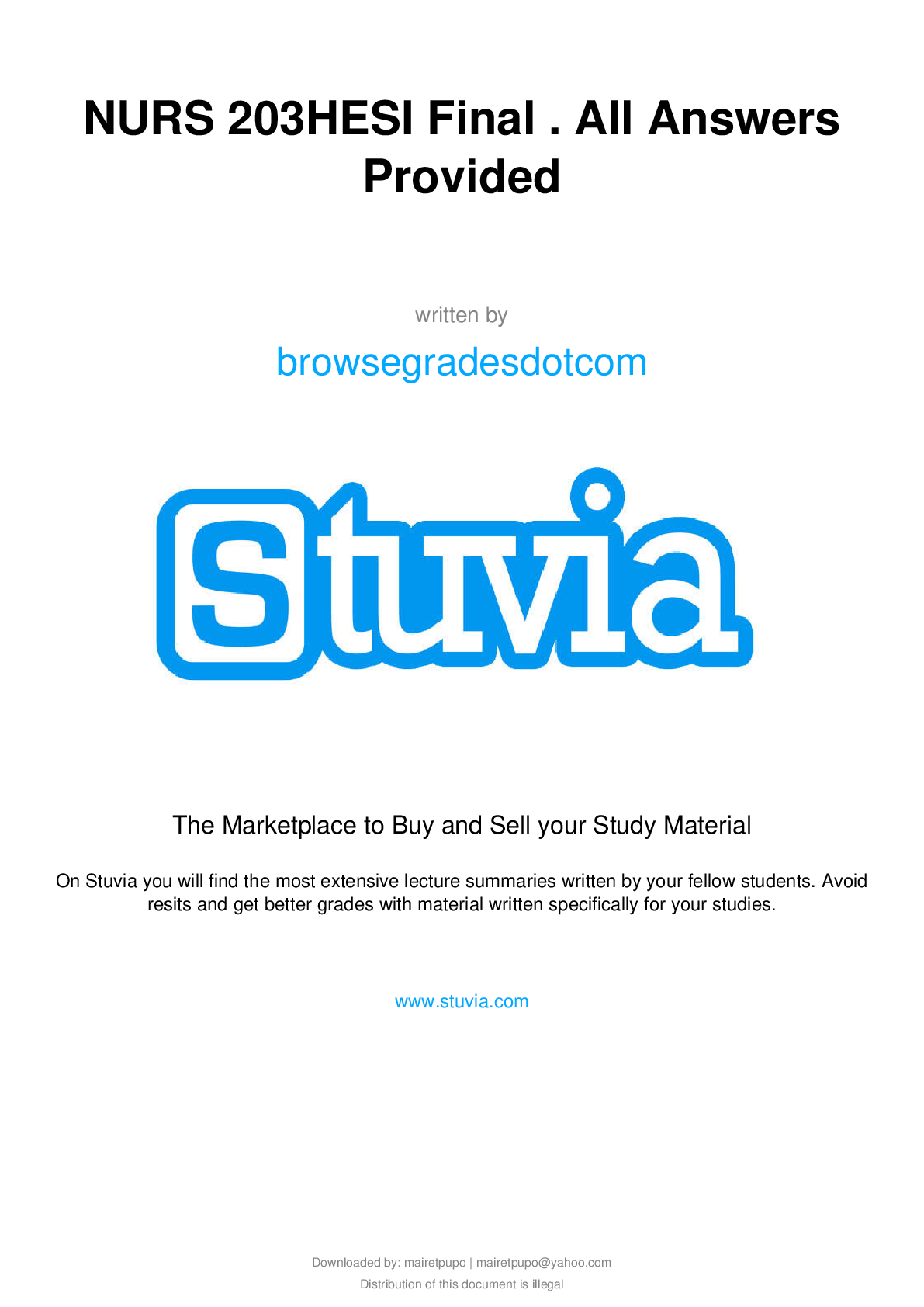*NURSING > QUESTIONS & ANSWERS > PREDICTOR HESSI 05/2018. With All the Answers (All)
PREDICTOR HESSI 05/2018. With All the Answers
Document Content and Description Below
1. A 37-year-old female patient with a history of a single episode of depression and frequent complaints of PMS is being treated for hypothyroidism. Today she complains of poor concentration and fat... igue. Initially, the NP should: a. Question her further 3. Which of the following is an example of secondary prevention? a. Annual influenza vaccination 7. A 35-year old female with a history of mitral valve prolapse is scheduled for routine dental cleaning. According to the 2007 American ___Association’s guideline for endocarditis prophylaxis, what would you advise this patient? a. She does not need prophylaxis for any dental procedure b. 8. A patient recovering from a recent stroke is starting anticoagulant therapy. The nurse practitioner should teach the patient to avoid all of the following EXCEPT: a. b. milk and milk products 9. A patient presents with periorbital erythema and edema, fever, and nasal drainage. The nurse practitioner should a. start aggressive antibiotic therapy 10. A positive drawer sign support a diagnosis of b. cruciate ligament injury 11. A 50-year-old patient with diabetes complains of pain bilaterally in her lower legs while walking. The pain disappears at rest. What else would you expect to identify on her lower extremities. b. peripheral artery insufficiency 12. A 16-year-old athlete complains of pain underneath his heel every time he walks. There is a verrucous surface level with the skin of the heel. What pharmacologic interventions should the nurse practitioner prescribe for this patient? a. salicylic acid plasters 13. A __-year-old with Type I diabetes has had itching and burning lesions between her toes for 6 months. Scrapings of the lesion confirm the diagnosis of tinea pedis. What is the best treatment option for this patient? a. prescribe an anti-fungal powder for application between her toes and in her shoes and a topical prescription strength anti-fungal cream for other affected areas. Monitor for a secondary bacterial infection. c. Prescribe an oral anti-fungal for 4 to 12 weeks. Monitor liver enzymes, BUN and creatinine at one week, 2 weeks, and every month thereafter. 2 d. Prescribe a prescription strength antifungal/steroid combination cream. Monitor for a secondary bacterial infection. 14. What is an appropriate drug for prophylactic treatment of migraine headaches in a 21-year-old [Show More]
Last updated: 2 years ago
Preview 1 out of 25 pages

Buy this document to get the full access instantly
Instant Download Access after purchase
Buy NowInstant download
We Accept:

Reviews( 0 )
$9.00
Can't find what you want? Try our AI powered Search
Document information
Connected school, study & course
About the document
Uploaded On
Jul 19, 2021
Number of pages
25
Written in
Additional information
This document has been written for:
Uploaded
Jul 19, 2021
Downloads
0
Views
77















